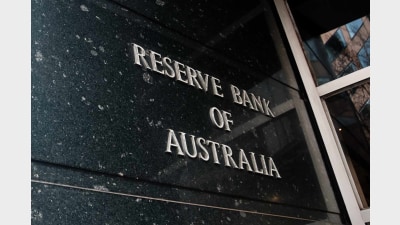Tips and traps when owning property within superannuation


Harry Patsias looks at some tips and traps when it comes to owning property within superannuation.
Commercial property has become a beacon in recent times for cashed-up self-managed super funds (SMSFs) seeking greater investment returns.
We are seeing strong activity among investors seeking to unlock money in super to purchase property and attain the income and tax benefits for their future retirement.
For the vast majority of investors, it pays to be wealthy in super at retirement rather than wealthy outside super at retirement. Owning property within a SMSF is a popular way of achieving this, particularly now that a SMSF can borrow and effectively gear its investments.
This strategy is not just restricted to the top end of town. Many smaller investors are also looking to better utilise their share of wealth in super and position themselves well for retirement.
We have been busy working on deals for clients involving multi-million dollar office buildings through to smaller commercial and residential properties under $500,000. Banks are also becoming more accustomed to lending to SMSFs.
Lifecycle of the investment
There are a number of issues across the lifecycle of a SMSF to consider. These range from the commercial and taxation issues at the front, middle and back-end to the various fund administration considerations and, ultimately, what occurs when the member passes away.
1. Establishment phase
The first step is to obtain advice as to whether a SMSF is right for you. Although establishment costs are not expensive, annual costs for accounting, auditing and investment advice can be.
It is therefore important to speak with your advisers about the costs of running a superannuation fund as well as the legal obligations and restrictions you have as a trustee, as these can be quite onerous.
Members may seek to roll their super over from public funds to a SMSF. Because of the costs of running a SMSF, there are minimum levels of funds required to enable a SMSF to run viably.
Members need to consider and obtain advice on rolling in monies and how much they are willing to contribute to their SMSF.
In some circumstances there can be taxation consequences when rolling monies out from other funds and making contributions.
Also, there are contribution limits that members need to be aware of when funding their SMSF.
Additionally, a SMSF needs to prepare an appropriate written investment strategy (WIS). This is a legal requirement and the Australian Taxation Office (ATO) looks closely to ensure a SMSF has one and properly follows it. Among other things, a WIS sets out the risks, composition, diversification, liquidity and cash flow issues for the SMSF.
Importantly, a WIS can authorise the holding of property and approve the fund borrowing to acquire such property.
2. Operational phase
Once a SMSF has been established and has an appropriate WIS, the SMSF can proceed to invest in real property and, if necessary, borrow to fund such acquisitions.
A SMSF can acquire either residential or commercial property from unrelated parties. However, a SMSF can only acquire commercial property, which must be wholly and exclusively used in one or more businesses, from related parties.
For example, a baker might own the property used in their bakery and transfer it to their SMSF, but they can’t transfer their residential rental property. It does not matter if the business using the property is a related party, provided there is a commercial lease in place.
Borrowing in a SMSF is not complicated, however, there are special rules that govern such borrowings.
For example, the borrowings must only be for the acquisition of an asset, the lender is limited in recourse to the asset itself (rather than all assets of the fund) and legal title to the asset must be separately owned by a custodian trustee for the benefit of the SMSF (which custodian trustee can be controlled by the members of the fund).
These types of arrangements are generally referred to as instalment warrants in the marketplace.
Importantly, any improvements required for the property following its acquisition must be paid using the available resources of the SMSF. A SMSF cannot borrow to effect property improvements.
By owning real property in a SMSF, any rental income or gains generated in the SMSF will be concessionally taxed, but once the SMSF commences pensions for the members, such income and gains will be generated tax free in the fund.
Additionally, members receiving pension income will be concessionally taxed until they reach age 60, at which time their pension income becomes tax-free as well. Superannuation can effectively fund an almost tax-free lifestyle.
3. Succession phase
It is important to understand that the property held by a SMSF will not be subject to the member’s will. Accordingly, upon the death of a member there are a number of things that can happen.
If the member has a spouse, the deceased member’s pension can continue to be paid by the SMSF to the spouse (or to minor children).
Alternatively, the SMSF can pay the deceased member’s account balance (or transfer the property) to the spouse, children, other dependents or the member’s estate.
To ensure a member’s account balance in the SMSF is properly dealt with upon their death, the member can make what is known as a binding nomination with the SMSF trustee. If the member has commenced a pension, the terms of the pension can direct who will benefit on the member’s death.
Accordingly, it is important for a SMSF member to consider the above succession issues with their professional adviser.
Under the spotlight
The ATO has said publicly that it’s looking closely at SMSFs to ensure trustees are meeting their obligations when acquiring property in relation to related party dealings, borrowings, in-house assets and non-arm’s length transactions as well as their written investment strategy.
With increased ATO audit activity in the area, it pays to seek professional advice before you head down the path of owning property within super.
Some issues to consider before owning real property in a SMSF:
- establishment and ongoing annual costs regarding administration of a SMSF;
- how much money does the fund have to effect the purchase of property?;
- should the SMSF borrow part of the cost to acquire property? Is this appropriate in the circumstances?;
- property must not be used for private purposes and all transactions are to be carried on at arm’s length terms;
- commercial property can be leased to a related business entity but must be under a written commercial lease;
- appropriateness with your SMSF written investment strategy/long-term aspirations/diversification of assets; and
- consideration of succession issues on the death of a member.
Harry Patsias is a senior associate with Wallmans Lawyers specialising in taxation and superannuation law.
Recommended for you
High risk, high return assets will become dangerous options for superannuation funds under the Federal Government’s planned $3 million superannuation changes, writes Brad Twentyman.
Economic policy can no longer ignore the macroeconomic impacts of Australia's superannuation system and the emerging policy implications, writes Tim Toohey.
In an age where climate concerns and social consciousness dominate headlines, it’s no surprise that investors are increasingly seeking investments that align with their values, writes Simon O’Connor.
How profit-for-member superannuation funds can embed 'commerciality with a heart' and marry a member-first culture with commercial outcomes.













Add new comment